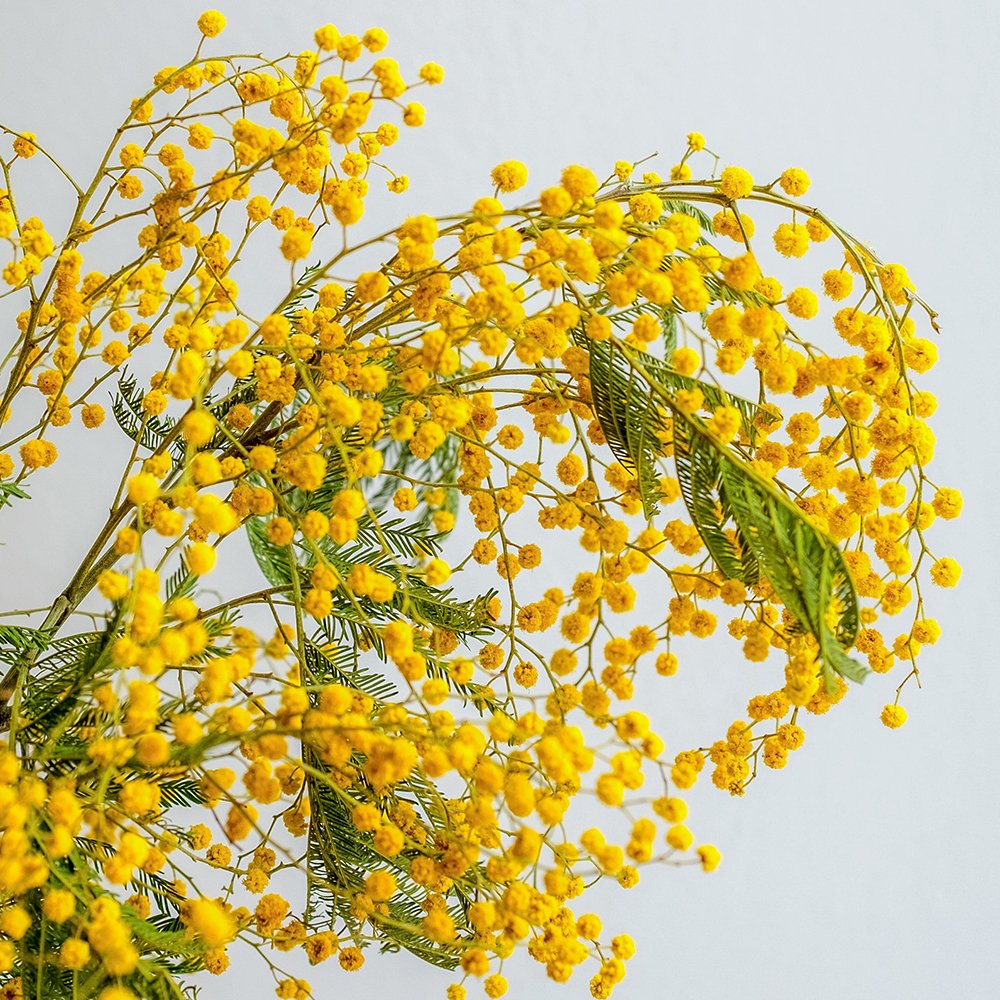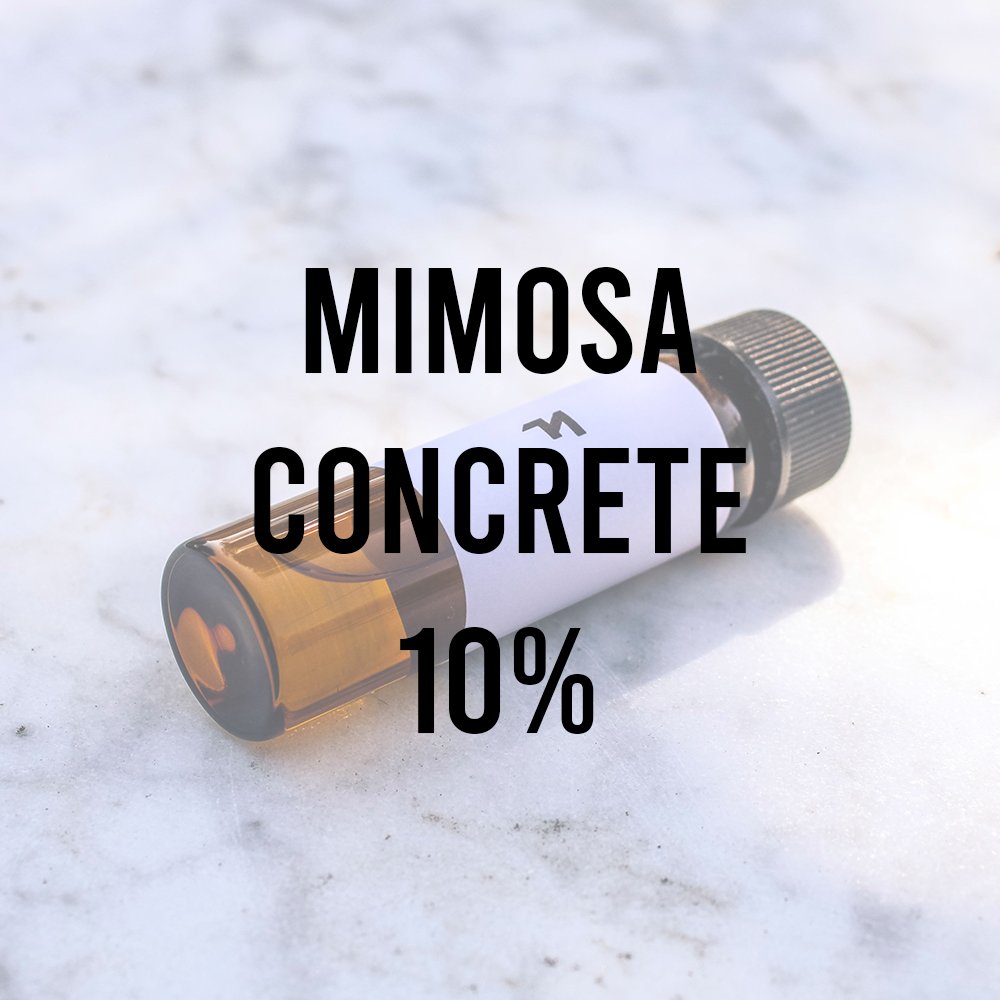 Image 1 of 2
Image 1 of 2

 Image 2 of 2
Image 2 of 2



Mimosa Concrete
Premium Natural Ingredient for Perfumery
Mimosa Concrete (Avaible in Solution 10% DPG) is a natural aromatic product obtained from Acacia decurrens, native to Australia and traditionally harvested in southern France.
This solution contains 10% mimosa concrete pre-diluted in dipropylene glycol (DPG), facilitating handling and formulation. It imparts a low-intensity, sweet-woody floral note and functions primarily as a floral fixative or modifier in soap perfumes and delicate floral blends.
Premium Natural Ingredient for Perfumery
Mimosa Concrete (Avaible in Solution 10% DPG) is a natural aromatic product obtained from Acacia decurrens, native to Australia and traditionally harvested in southern France.
This solution contains 10% mimosa concrete pre-diluted in dipropylene glycol (DPG), facilitating handling and formulation. It imparts a low-intensity, sweet-woody floral note and functions primarily as a floral fixative or modifier in soap perfumes and delicate floral blends.
Premium Natural Ingredient for Perfumery
Mimosa Concrete (Avaible in Solution 10% DPG) is a natural aromatic product obtained from Acacia decurrens, native to Australia and traditionally harvested in southern France.
This solution contains 10% mimosa concrete pre-diluted in dipropylene glycol (DPG), facilitating handling and formulation. It imparts a low-intensity, sweet-woody floral note and functions primarily as a floral fixative or modifier in soap perfumes and delicate floral blends.
Natural Ingredient Overview
🔎 Botanical Name: Acacia decurrens
🧪 Synonyms: Mimosa Concrete, Mimosa Concrète, Mimosa Flower Wax
🧬 Chemical Family: Floral extracts (waxes, resinoids)
📘 FEMA: Not listed
📝 Odor Type: Floral
📈 Odor Strength: Low
👃🏼 Odor Profile: Sweet, woody, fatty, faintly fruity, slightly green
⚗️ Uses: Fixative, Modifier
🧴 Appearance: Pale yellow to opaque cream solution
What is Mimosa Concrete Solution 10% DPG?
Mimosa Concrete is obtained via solvent extraction (typically petroleum ether) from the flowering branches of Acacia decurrens. The trees, cultivated in Southern France and to a lesser extent Italy, bloom in early spring. The resulting concrete is a hard, waxy, pale yellow mass with a low volatility, composed of waxes, aromatic esters, and trace alcohols.
The 10% solution in dipropylene glycol (DPG) is a stable, pourable format suited to perfumery work. It preserves the key olfactory features of the pure concrète while improving dosage control and solubility in blends.
Mimosa concretions are distinct from mimosa absolute, which is extracted from the concrete using ethanol. Compared to cassie, mimosa is less spicy, sweeter, and more naturalistic in floral interpretation. It lacks the complex indolic or leathery tones found in cassie.
Historical note: The 1956 frost in southern France caused near-total mimosa crop failure, temporarily halting all concrete and absolute production.
Olfactory Profile & Perfumery Applications
Mimosa Concrete Solution offers a delicate, powdery floral scent with sweet-woody, fatty, and faintly fruity-greentonalities. While its odor intensity is low, it delivers notable fixative performance, particularly in soap applications.
Perfumery applications include:
Floral themes: lilac, violet, muguet, orange blossom
Herbaceous-coumarinic blends: freshly cut hay, new-mown notes
Powdery soap bases and musky florals
Naturalistic “lift” in vintage-style perfumery
Typical usage: 0.5–2.0% in soap perfumes can enhance depth and longevity without overwhelming more volatile top notes.
Suggested internal link: See Fixatives in Perfumery for insights into natural and synthetic fixatives.
Industrial & Technical Uses
Mimosa concrete is used exclusively in fine fragrance and personal care due to its low solubility and cost. No known uses exist in flavor, industrial fragrance, or pharmaceutical formulations. The pre-diluted DPG version facilitates integration into alcohol-based and emulsion systems.
Regulatory & Safety Overview
IFRA status: Not currently restricted; verify per category
ECHA: Not registered as a single substance
Allergen presence: Potential trace allergens due to natural composition (manual verification advised)
Solubility: Insoluble in water; soluble in ethanol and DPG
Stability: Stable when stored in opaque, sealed containers away from light
Due to the natural origin and composition variability, batch-to-batch consistency may vary slightly. Cold temperatures may cause wax precipitation in diluted forms.
Expanded Technical Integration
Mimosa absolute—derived from concrete—offers enhanced solubility and greater olfactory impact. While concrete is waxy and low in diffusion, the absolute exhibits higher concentration of key floral-lactonic components. According to S. Arctander, mimosa absolute is used to:
Round off “synthetic” harshness
Bridge violet, heliotrope, and lilac themes
Combine well with: ionones, methyl ionones, anisyl esters, heliotropin, linalool, ylang-ylang, and indole (in traces)
These synergies make mimosa a foundational material in building naturalistic floral bases.
Sources
User-provided information and Fulvio Ciccolo, 2021
Perfume and Flavor Chemicals, S. Arctander (1969)
Scentspiracy Internal Archives
Photo credits: Kolya Korzh, Florencia Galan (Unsplash)




